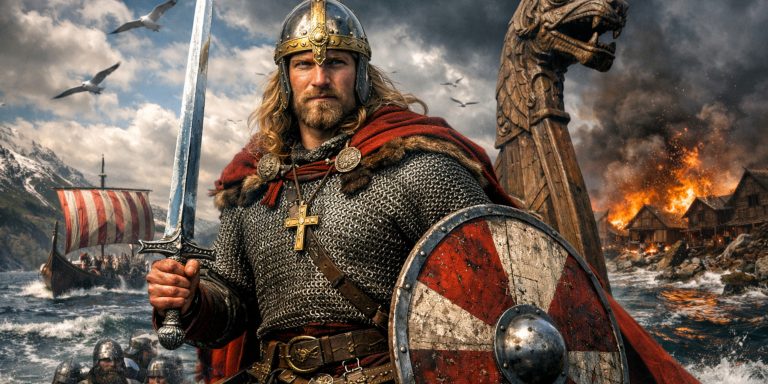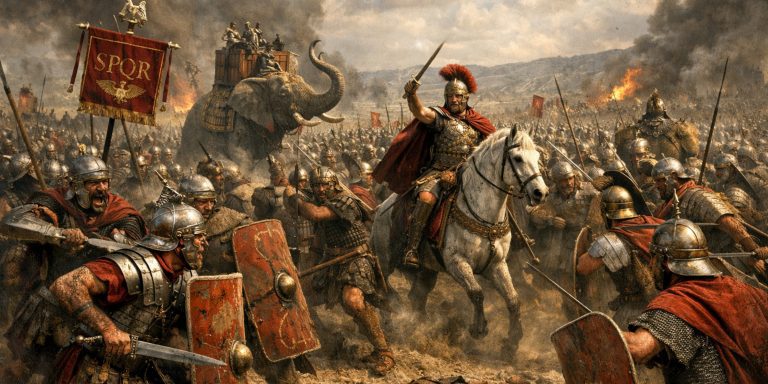
Few sieges in the Napoleonic Wars match the sheer brutality of Badajoz. It was not a battle of open plains and gallant cavalry charges, but of mud, darkness, and masonry. The town of Badajoz, guarding the Portuguese–Spanish frontier, was a fortress of strategic and psychological weight. For Wellington, it represented a key to driving the French from the Iberian Peninsula. For his troops, it became a living nightmare.
The assault in April 1812 would leave over 4,000 British soldiers dead or wounded in a single night, and what followed inside the city’s walls would tarnish even Wellington’s shining reputation.
Background
By spring 1812, the Peninsular War had entered a critical phase. Following the capture of Ciudad Rodrigo earlier that year, Wellington turned his attention south to Badajoz, a formidable stronghold on the Guadiana River. Its capture would open the road to Madrid, but it was no easy prize. The fortress was ringed with bastions, water-filled ditches, and heavy guns manned by determined French defenders under General Armand Philippon.
This was the third siege of Badajoz in as many years. The first two attempts by the British had failed miserably. Wellington knew that success this time would require both engineering precision and a willingness to sacrifice.
Forces
| Side | Commanders | Estimated Strength | Notes |
|---|---|---|---|
| British, Portuguese, and Spanish Allies | Field Marshal Arthur Wellesley, 1st Duke of Wellington | Around 27,000 | Included British divisions under Picton, Colville, and Kempt, supported by Portuguese engineers. |
| French Empire | General Armand Philippon | Around 5,000 | Included the 88th Line Infantry and strong artillery complement entrenched within the walls. |
Leaders and Troop Composition
Allied Forces (British-led Army)
- Commander: Arthur Wellesley, Duke of Wellington
- Corps:
- 3rd Division (Major General Thomas Picton)
- 4th Division (Major General Charles Colville)
- Light Division (Major General James Kempt)
- Portuguese contingents under General Sir Denis Pack
- Artillery: 48 siege guns and mortars
French Garrison
- Commander: General Armand Philippon
- Units:
- 34th and 88th Regiments of the Line
- 1st Regiment of Grenadiers
- Garrison artillery corps
- Defences: heavily fortified bastions (Trinidad, Santa Maria, San Roque) and the castle citadel
Arms and Armour
By 1812, warfare had evolved into the age of the musket and the cannon, yet swords still played their part in the grim work of storming breaches.
British Army Weapons
- Brown Bess Musket – the workhorse of the British infantry, effective at close to medium range.
- Baker Rifle – used by light infantry and riflemen in the 95th Rifles.
- 1796 Pattern Infantry Officer’s Sword – a light, curved sabre carried by officers, more symbolic than practical in siege fighting.
- 1796 Light Cavalry Sabre – prized for its cutting edge, though cavalry had little use inside Badajoz’s walls.
- Sappers and Miners – armed with short swords, picks, and explosives, they bore the brunt of the storming.
French Defenders
- Charleville Musket – the standard French long gun, known for its balance and reliability.
- French Infantry Briquet – a short sword ideal for the confined, brutal melee combat in the breaches.
- Artillery Pieces – 12-pounders and 24-pounders mounted on bastions, raining destruction on every approach.
Both sides wore minimal armour beyond shakos, jackets, and perhaps the bravery of desperation. The close-quarters combat saw bayonets and blades used more as tools of survival than symbols of rank.
The Siege
The siege began on 17 March 1812, with Wellington’s engineers laying trenches and batteries under near-constant fire. The Guadiana River and spring rains turned the ground into a swamp, complicating logistics. Over several weeks, breaches were opened in the fortress walls through relentless bombardment, particularly at the Trinidad and Santa Maria bastions.
On the night of 6 April, Wellington ordered the storming. It was an operation of desperate courage and grim futility. As the assault columns advanced, they met mines, chevaux-de-frise, and a storm of grapeshot.
Picton’s men scaled the walls at the castle, while the 4th and Light Divisions attacked the main breaches. Hundreds were cut down or blown apart, and still they came. The sheer weight of numbers eventually carried the British over the defences.
The Aftermath
Once inside the city, discipline evaporated. For two days Badajoz descended into chaos, as drunken soldiers looted, burned, and assaulted civilians. Wellington wept in private and raged in public, but order only returned when executions began.
The victory cost the British over 4,800 casualties. Philippon and the French surrendered honourably, their defence earning even their enemies’ respect. Wellington, though victorious, reportedly said, “The men behaved terribly after the storming, and I could not stop it. It was a sickening sight.”
Archaeology
Modern archaeological work at Badajoz has uncovered evidence of both the siege and its aftermath. Excavations near the Trinidad bastion revealed cannonballs, musket flints, and shrapnel embedded in the stonework. In 2009, researchers identified several mass graves containing the remains of British soldiers, their uniforms and regimental buttons still intact.
Fragments of military equipment, including a broken 1796 pattern sword hilt and musket locks, suggest the intensity of the hand-to-hand combat. The defensive walls themselves, heavily restored, still bear the pockmarks of cannon fire.
Battle Timeline
| Date | Event |
|---|---|
| 17 March 1812 | Siege of Badajoz begins. British engineers begin constructing parallels. |
| 25 March | Heavy bombardment of the walls commences. |
| 31 March | The Trinidad bastion begins to crumble under artillery fire. |
| 5 April | Wellington orders the assault to commence the following night. |
| 6 April (Night) | Main assault launched against the breaches. Catastrophic losses suffered but breaches finally taken. |
| 7 April (Morning) | French garrison withdraws to the castle and surrenders by midday. |
| 7–9 April | Rampage and looting by British troops. Discipline restored after executions. |
Contemporary Quotes
“The town was carried at the point of the bayonet, and then the horrors of a storm ensued.” – Lieutenant Colonel John Jones, Royal Engineers
“Never was there a more horrid scene of slaughter, nor one more bravely sustained.” – Captain John Kincaid, 95th Rifles
“The breach was choked with the dead and dying, yet still we climbed.” – Anonymous soldier’s diary, 1812
Legacy
The Battle of Badajoz stands as both triumph and tragedy. It was one of Wellington’s most brilliant tactical victories, achieved through discipline, endurance, and grim determination. Yet it also exposed the raw savagery of war and the thin veneer of control even the best generals could maintain.
For the French, Philippon’s gallant defence delayed the inevitable collapse of their Iberian position but earned him enduring respect. For the British, the blood-soaked breach at Badajoz became a grim legend, a reminder that glory often comes at an intolerable cost.
Watch the documentary:



